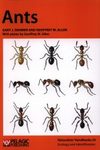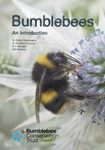Field / Identification Guide Identification Key
New Edition
By: Gary J Skinner(Author), Andrew P Jarman(Author), William DJ Kirk(Preface By)
327 pages, colour photos, colour & b/w illustrations, colour distribution maps
![Ants Ants]()
Click to have a closer look
About this book
Customer reviews
Biography
Related titles
About this book
Ants are found everywhere from garden to mountaintop. They are at their most diverse in the tropics, but that does not make the 61 species of our part of the world any less fascinating or significant. As social insects, ants have fascinating life histories. Ecologically, they are highly important and influential. From tiny guest ants living in the nests of bigger species to gigantic wood ant mounds with hundreds of thousands of workers, there is a lifetime of possibility for study.
This second edition of Ants covers the general biology and ecology of species occurring in Britain and Ireland, including the Channel Islands. The book presents photographs and descriptions of workers for all 61 species on the regional list, together with distribution maps. There is also an account of some of the exotic species that may turn up in heated buildings. The extensively illustrated keys deal with workers, queens and males of all the species. These have been specially written and are the first comprehensive keys since those of the first edition almost 30 years ago. There are also quick-check keys to workers and nests, as well as a detailed list of kit suppliers and an extensive reference list.
Ants are among the most familiar of insects and can form a crucial part of their ecosystem, having an impact far greater than their small individual size would lead us to expect. This book is for anyone wanting to learn more about these endlessly interesting insects, by reading and by applying some of the methods discussed to make new discoveries.
Customer Reviews
Biography
Gary Skinner began a degree in chemistry but soon decided to swap to biology and obtained a degree in 1972. He then went on to study the wood ant Formica rufa for his PhD. After this he went on to a career in teaching until his retirement in 2008. In the 80s whilst on a trip to Skomer he saw a little book on British buttercups and thought 'I could do one on ants'. That was published in 1987 and its success led him to think about a Naturalists' Handbook, which came out in 1996. Teaching in a boarding school was very demanding but he managed to fit in some ant observing, especially in the 90s when he undertook survey work in the Northwest of England during a sabbatical term. He has written extensively across the biological sciences and was editor of the magazine Catalyst for 10 years until 2017. In retirement, he has continued to write and mark GCSE and A-level examinations.
Andrew Jarman has had a life-long fascination with ants. He claims that his earliest memories are of discovering there were three types of ants in his parents' garden (black, red, and yellow) before he learned to walk. Over the decades since he has accumulated an extensive field and taxonomic knowledge of ants in Britain, as well as gaining a working knowledge of the ant faunas of continental Europe, Central and North America, and South-East Asia. He has been a member of the Bees, Wasps and Ants Recording Society since its earliest days and was a past committee member. In his day job, he is a lecturer and researcher in biomedical sciences, specialising in the neurobiology of the laboratory fruit fly, Drosophila melanogaster.
Field / Identification Guide Identification Key
New Edition
By: Gary J Skinner(Author), Andrew P Jarman(Author), William DJ Kirk(Preface By)
327 pages, colour photos, colour & b/w illustrations, colour distribution maps
"A greatly researched book, with comprehensive, up to date species information, easy to use identification keys and so much more. A must read which will appeal to both the amateur and professional alike. This book will be my go to point of reference for all matters relating to the ants of Britain and Ireland."
– Kevin Henry, experienced amateur myrmecologist/naturalist
"This updated edition of the Naturalists' Handbook provides a thorough exploration of the ecology and biology of British ants, enhanced by the excellent photography. Comprehensive, accessible, and beautifully illustrated, I would recommend this book to both curious beginners and seasoned entomologists."
– Prof EJH Robinson, Professor in Ecology, University of York
"If you're interested in the ants that inhabit Britain and Ireland then this is the book for you. All 60 species are described with colour photos, and distribution maps. I found the chapter on studying ants particularly inspiring as it's full of suggestions of interesting research work that has not yet been done and could be tackled. In addition there is a really useful key to help you identify to species any ants you come across, be they workers, queens or males. I can see this book quickly becoming a standard work and an essential guide to any serious ant enthusiast."
– Mike Fox, myrmecologist and website manager at BWARS
"For beginner and expert alike with an interest in the British ant fauna, this is the must-have book. This fully updated edition has new, well-illustrated keys to 61 out of the 62 British species, using drawings and photographs, details and distribution maps for each species and an introductory section covering all you need to know about their evolution, biology and identification tips. The conservation section covers some of the rarer species and indicates reasons for their decline and possible methods to aid recovery."
– David Scott-Langley, experienced amateur naturalist
"This updated edition of Naturalists' Handbook 24, with comprehensive information regarding their biology and how to find ants, backed up by new keys to workers, queens and males, fills an important gap in our understanding of the biodiversity of the British Isles. It is expected that the publication of this volume will inspire a new generation of ant recorders and, consequently, an improved coverage of this ecologically important group of aculeates."
– Mike Edwards, data manager at BWARS























































